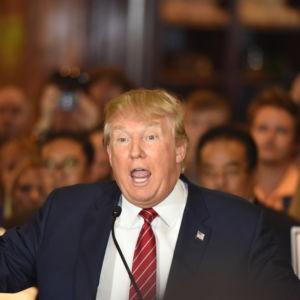President-elect Donald Trump is entering office at a time when economic confidence has remained near a record high, according to a poll Tuesday.
Trump will be officially sworn in as president during the inauguration ceremony Friday. Economic confidence reached 11 points following the Nov. 8 election, the highest score since Gallup began daily tracking in the midst of the 2008 recession. Gallup found economic confidence has remained relatively steady in the months since the election and now sits at 10 points.
“After nine years of nearly uninterrupted negative economic assessments, Americans’ views of the economy brightened significantly after the November presidential election,” Gallup said. “This positive swing mostly stems from surging confidence among Republicans and independents who lean Republican.”
Trump campaigned on a jobs-focused message which helped him to win support among the working class. Republicans are driving the high confidence levels at positive 16 points from a negative 43 points before the election. Democrats lost some confidence in the economy but not enough to offset the gains by Republicans.
“Confidence in the economy has fallen among Democrats,” Gallup said. “Nonetheless, even if Democrats’ confidence in the economy has slumped since the election, it is still considerably higher than the negative levels that prevailed among Republicans for much of President Barack Obama’s tenure.”
Democrats were considerably confident in the economy at a positive 27 points prior to the election. Now their confidence has fallen to a positive eight points. Democratic President Barack Obama is still in office which may explain why confidence among the left hasn’t fallen further.
“Once Donald Trump officially takes over the presidency on Friday, it would not be surprising to see Democrats’ economic confidence sapped further,” Gallup said. “If there is not a commensurate rise in confidence among Republicans, the overall index score will likely fall as well.”
The index rates economic confidence on a scale of 200 possible points, from -100 to +100, based on two main factors. It looks at how Americans rate current economic conditions and whether they feel the economy is improving or getting worse.
There is still significant room for improvement with economic confidence at only 10 points. The low level of confidence over the years is likely the result of the last recession almost a decade ago. The economic downturn was followed by an irregularly prolonged recovery.
The economy has shown positive trends in recent years but there have still been major issues. The labor market, for instance, has been steadily growing and is close to full employment. The labor force participation rate, however, has failed to reach the level it was at before the recession.
The recession was sparked by the subprime mortgage crisis and the financial crisis of 2007. The poll found economic confidence started at negative 24 points when it was first conducted in 2008. It dropped to a record low of negative 65 points in the following year.

